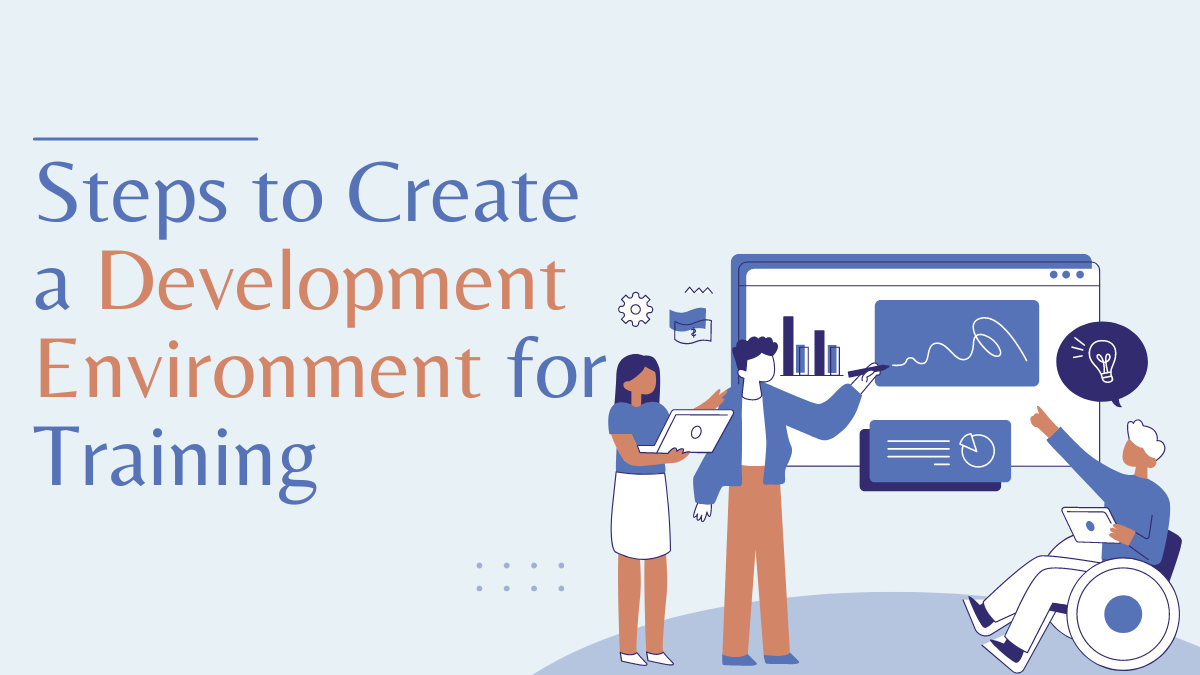Steps to Create a Development Environment for Training That Gets Results

Are you looking to create a development environment for training that would provide the prerequisite abilities, tools, and insights essential for system administrators, developers, or teams to become skillful in their respective roles? Training is an indispensable part of every business these days; it not only helps individuals stay abreast with the latest trends in technology but also fosters a collaborative atmosphere. Therefore, training has become a must-have for each organization to make sure that its employees are equipped with the skills required to meet the ever-changing demands of the IT industry. To maximize its effectiveness, precise training should be conducted within an accurate and efficient development environment.
In this blog post, I will discuss how you can quickly create a development environment for training program so as maximize your team’s productivity during crucial IT tasks.
What is Development Environment for Training?
A development environment for training is an integrated set of software and hardware components that are used for developing, running, testing, and deploying web applications or software. These environments enable training teams to create powerful learning experiences in a controlled and secure environment. By leveraging the development environment capabilities, these teams are able to design and implement custom training plans, scenarios, tasks, and assessments that provide the best possible learning experience. A development environment can also be used for creating virtual simulations allowing learners to test their skills in a safe environment.

Why you Should Create a Development Environment for Training?
Creating development environments for training provides numerous benefits both to the trainees and the organization.
For starters, when you create a development environment for training, it eliminates the need for physical equipment such as servers or PCs that would otherwise be needed to run a training session. By using virtual tools and simulators, multiple sessions can be hosted in the same environment without any hardware requirements. This saves money on equipment and offers greater flexibility.
A development environment for training can be used to quickly deploy new software or changes to existing systems without the need to re-provision hardware. This is particularly beneficial when dealing with complex configurations or applications that require special setups in order to function properly. By being able to quickly make changes without having to worry about hardware, organizations can save a lot of time and effort.
Creating development environments for training also provides an opportunity to test out new concepts or technologies without having to worry about the consequences of making mistakes. This is especially useful when introducing employees to unfamiliar software or processes as mistakes can be easily corrected in a safe environment before being applied in production.
Development environments can be used to accurately simulate production systems in real-time. This allows employees to practice responding to problems or issues without the risk of disrupting actual services. It also allows organizations to identify potential threats and vulnerabilities before they become issues in a live environment.
Steps to Creating an Effective Development Environment for Training
Creating a development environment for training is an important step to ensure the success of training program. When you create a development environment for training, it allows teams to experiment and gain hands-on experience with the technologies they’re learning, a key component of effective online learning.

The process of setting up a development environment can be broken down into four main steps:
1. Choose a development platform
When creating a development environment for training, choose one that best meets the needs of your learners. Consider the course objectives and materials being taught, as well as any unique requirements of the teams. Evaluate different platforms to make sure they have the functionality needed to complete projects successfully.
2. Select a development language
Once the platform has been chosen, it’s time to select a programming language. Determine which languages are best suited for the course objectives and materials being taught. Evaluate both popular and more niche languages available on the platform of choice to ensure that your students have access to all of the necessary tools.
3. Install the right tools
Once the platform and language have been determined, it’s important to install any necessary software, libraries, and frameworks to make sure students can develop applications correctly. Research different programs available on the platform to determine which ones are best suited for the course objectives.
4. Set up debugging capabilities
Debugging is a critical step in the development process that allows students to identify issues and solve problems. Set up debugging capabilities on the platform so that learners can quickly troubleshoot any issues they encounter while developing applications.
Following these four steps will help create a successful development environment for training, allowing teams to gain hands-on experience with the technologies they’re learning. With the right setup, they can become confident and effective developers in no time.
Conclusion
By designing your own development environment, you can control the learning experience and customize it to fit the needs of your team. A development environment that encourages success and rewards exploration is the first step in creating a successful training program. It should be tailored to emphasize collaboration and communication, as well as emphasizing individual accomplishments. Providing feedback through consistent evaluations, milestones, and other measures is key to keeping everyone on the same page and ensuring information is being absorbed successfully.
Leveraging tools such as video training or virtual instruction rooms allows trainers to teach from anywhere; giving more control to both trainer and trainee in terms of when and where they learn. Creating a development environment for training isn’t a one-size-fits-all solution; however by following these steps, you can create a development environment for training focused on helping everybody at any skill level reach success.




